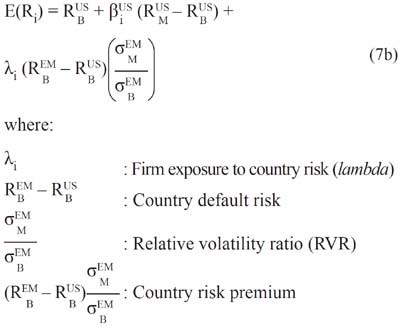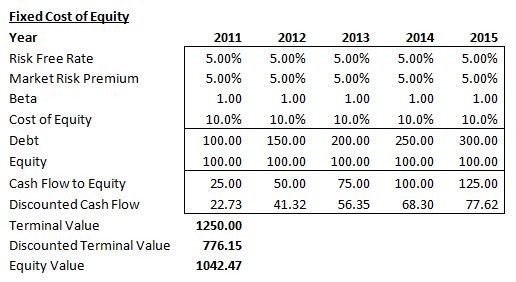Cost of Equity
Post on: 20 Апрель, 2015 No Comment

Cost of equity (also known as cost of common stock) is the minimum rate of return which a company must generate in order to convince investors to invest in the company’s common stock at its current market price. It is alternatively referred to as required rate of return.
Cost of equity is an important input in common stock valuation under different models.
Formula
Cost of equity under the dividend discount model
Dividend discount model for estimation of cost of equity is useful only when the stock is dividend-paying. In reality, we have a lot of stocks that do not pay dividends. In such situations, the capital asset pricing model and some other more advanced models are used.
Examples
Example 1: Cost of Equity Under the Capital Asset Pricing Model
The yield on 5 year US treasury bonds as at 30 December 2012 is 0.72% (this data can be obtained from Bloomberg, Morningstar, etc.). From Yahoo Finance, we find that Caterpillar Inc.’s share price as at 30 December 2012 is $86.81 per share while it has a beta coefficient of 1.86. Trailing twelve months (TTM) return on S & P 500 is 11. 52%. Estimate the cost of equity.
Under the capital asset pricing model, the rate of return on short-term treasury bonds is the proxy used for risk free rate. We have an estimate for beta coefficient and market rate for return, so we can find the cost of equity:
Cost of Equity = Risk Free Rate + Beta Coefficient (Market Rate of Return Risk Free Rate)
Cost of Equity = 0.72% + 1.86 (11.52% 0.72%) = 20.81%
Example 2: Cost of Equity Under the Dividend Discount Model

Caterpillar Inc.’s share price as at 30 December 2012 is $86.81 per share. Its last five year’s average total dividends, return on equity and payout ratios are $1.6, 34.75% and 47.08%.
Before using the dividend discount model for estimating cost of equity, we need to make sure we have the required inputs which include the growth rate, dividends in next period and current market price.
We have the current market price ($86.81) and we need to estimate the growth rate and dividends in next period.
Growth Rate = (1 47.08%) 34.75% = 18.39%
Dividends in Next Period = Dividends in Current Period (1 + Growth Rate) = $1.6 (1+18.39%) = $1.89
We have the required inputs which we can just punch into the following equation to get an estimate for return on equity:














